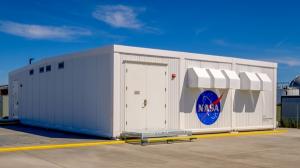
[아이티비즈 김문구 기자] Human moon landing missions such as identifying risk factors in the rocket launch environment and dramatically reducing energy consumption by performing advanced simulations of the NASA’s 8-Con supercomputer based on high-performance supercomputing power. It was announced on the 8th that it contributed to the new achievements of the project for the future.
The project is part of NASA’s Artemis mission, scheduled for launch in 2024, and is conducting new research into the separation and launch environment of the propellant during a rocket launch at the Kennedy Space Center, helping NASA engineers create a safer and more successful spacecraft. To support.
In addition, HPE has taken the power of NASA’s Eight-Con supercomputer to the next level with the HPE Apollo System designed for compute-intensive modeling and simulation. The increased computing power has been utilized for NASA’s Computational Fluid Dynamics (CFD) study, which is critical to understanding aerodynamics since January this year.
Bill Manel, vice president and general manager of the HPE HPC division, said, “Based on the HPE Apollo system, we are accelerating insights by upgrading NASA’s EightCon supercomputer performance, for the historic moment of the birth of the first lunar female astronaut and the next male astronaut. They are doing a part.”
Copyright © ITBIZ Unauthorized reproduction and redistribution prohibited
